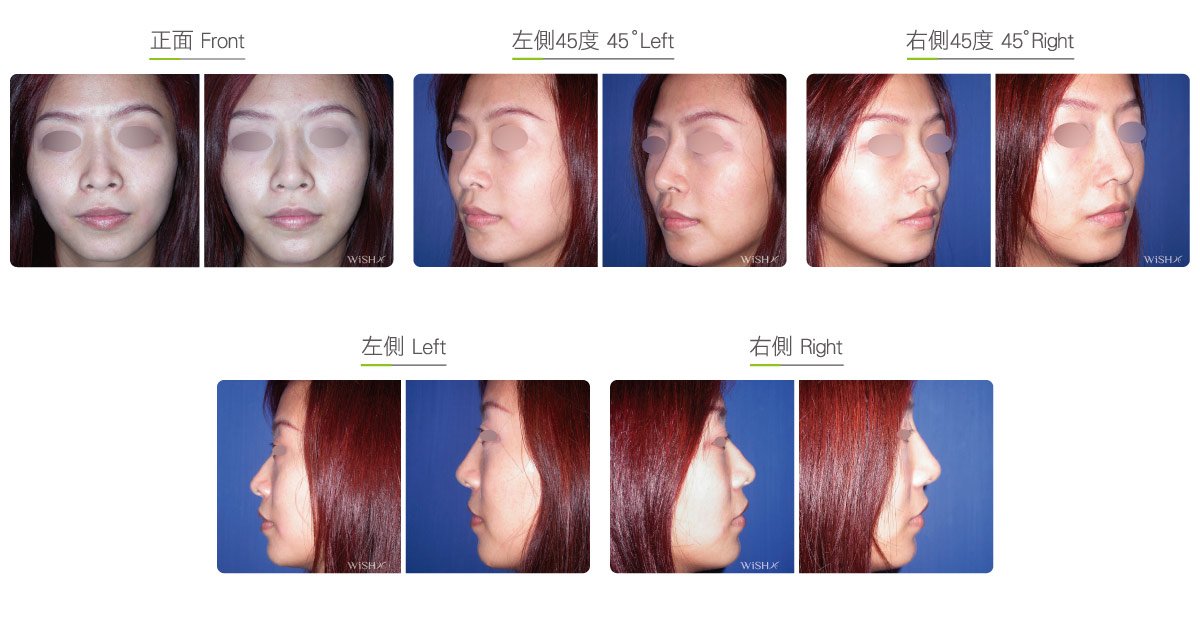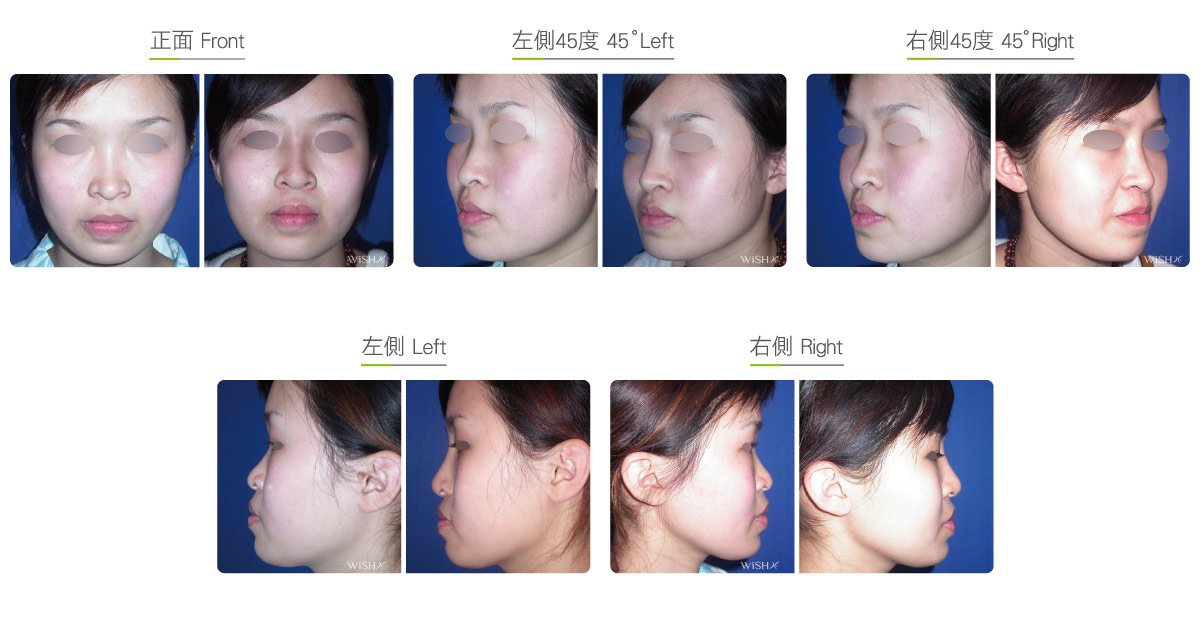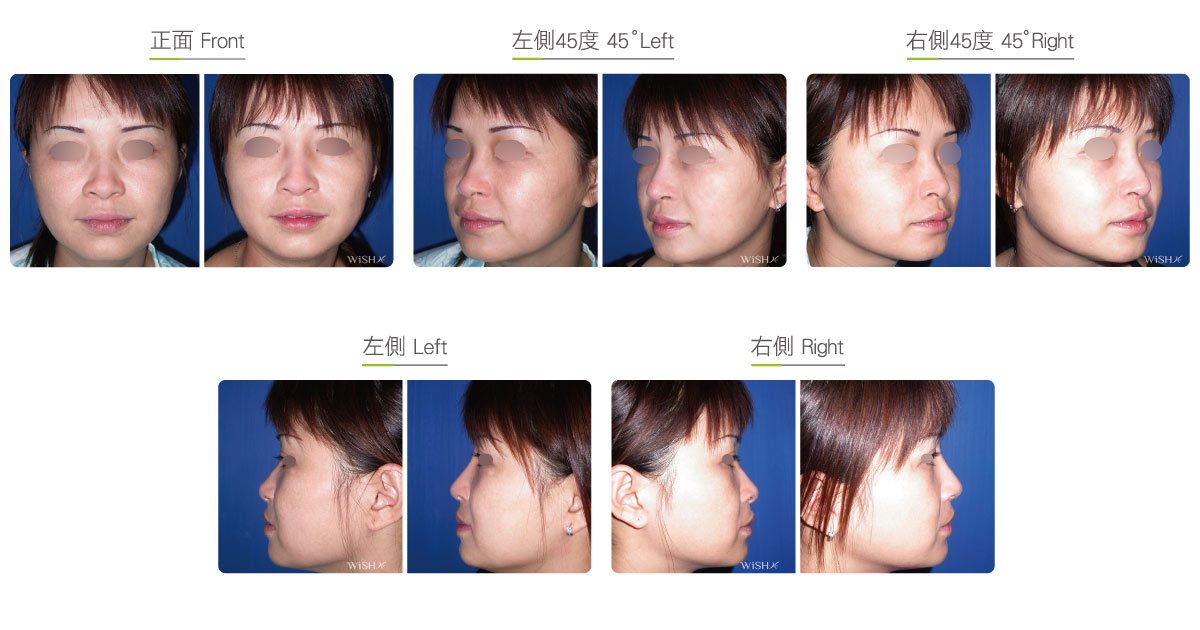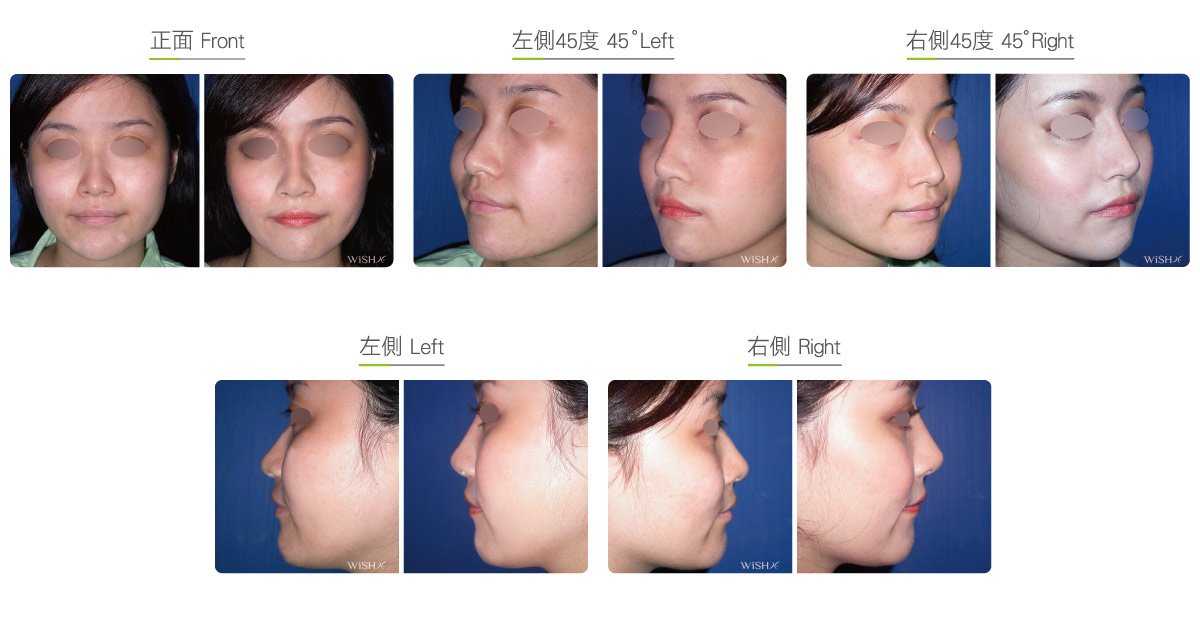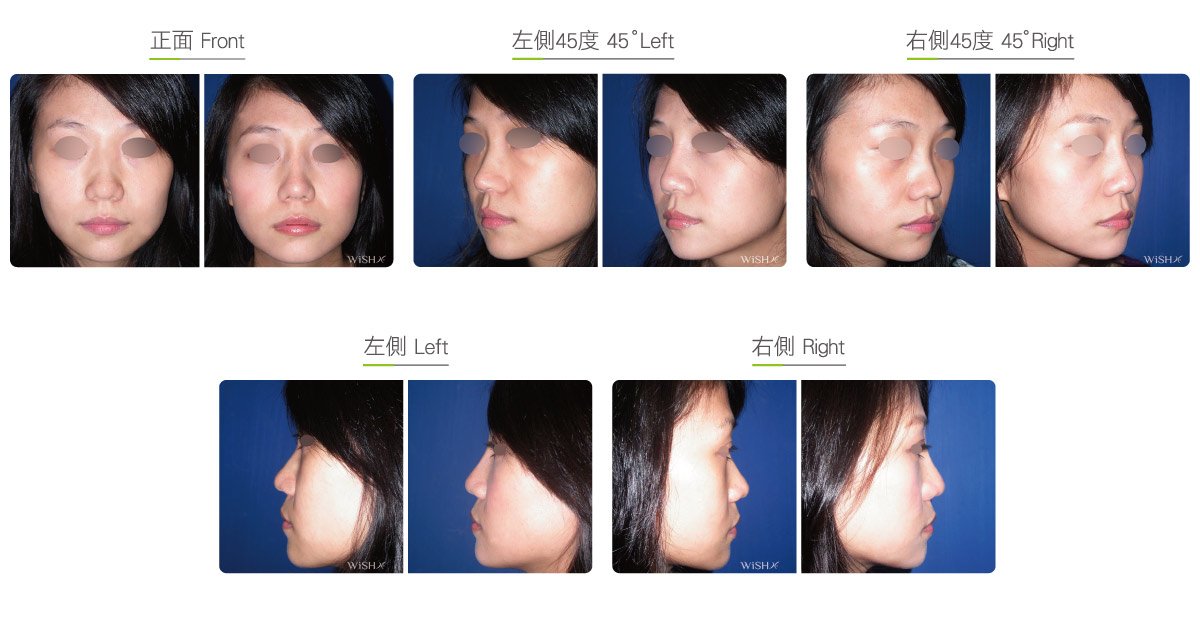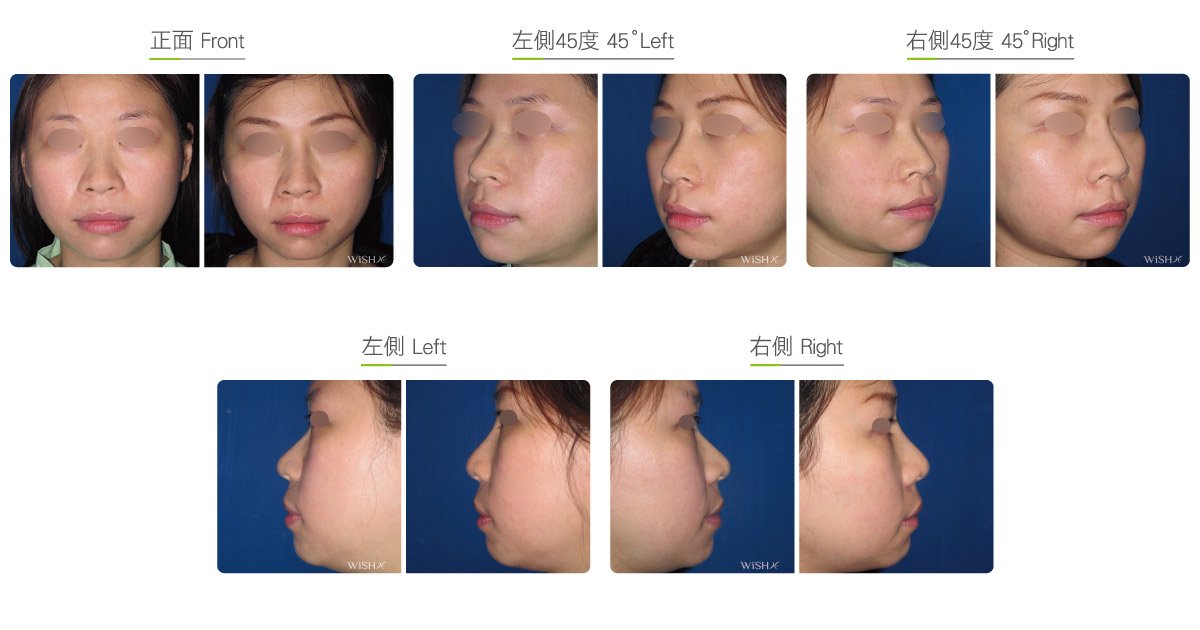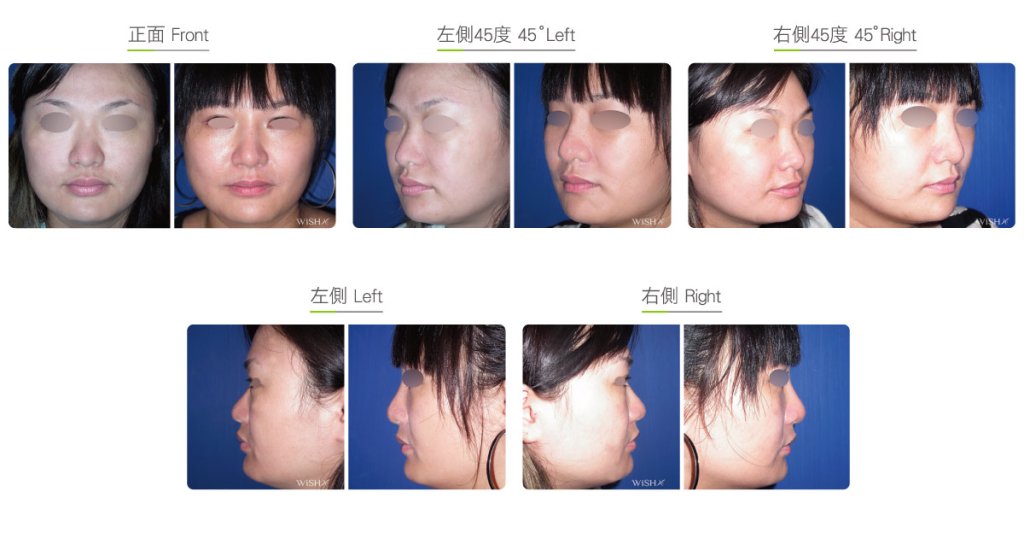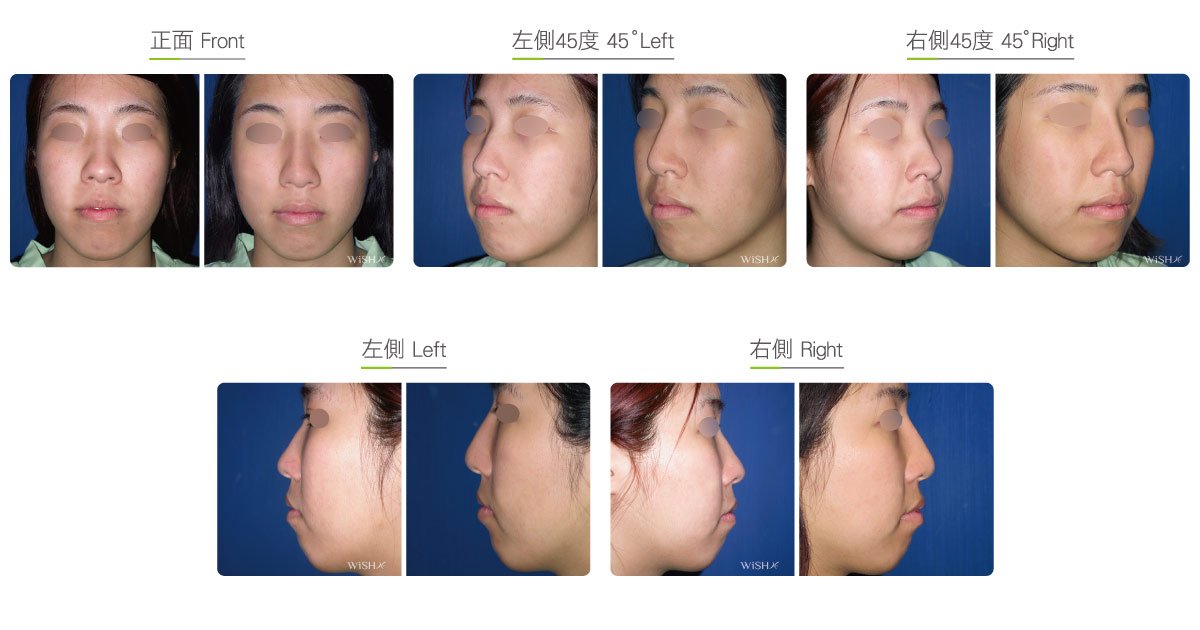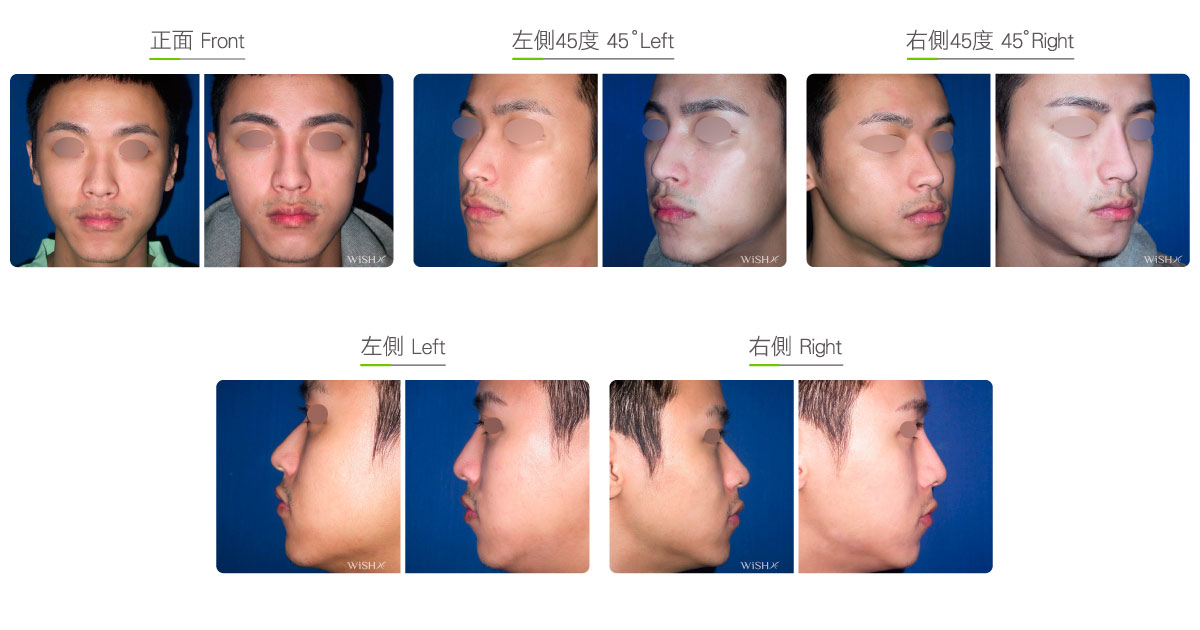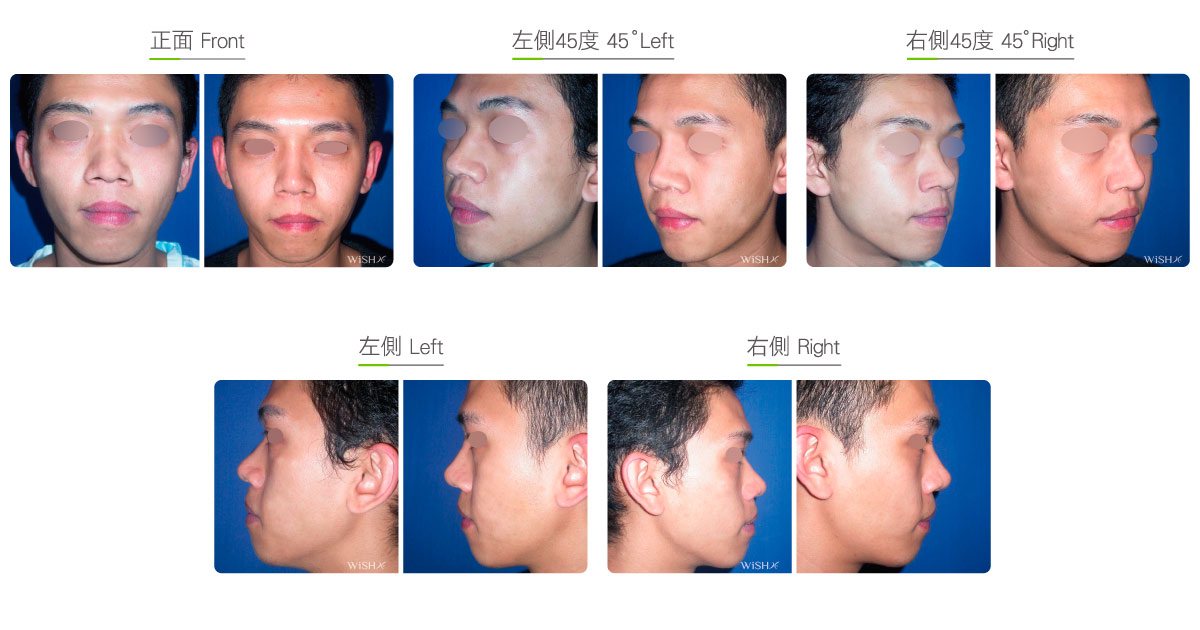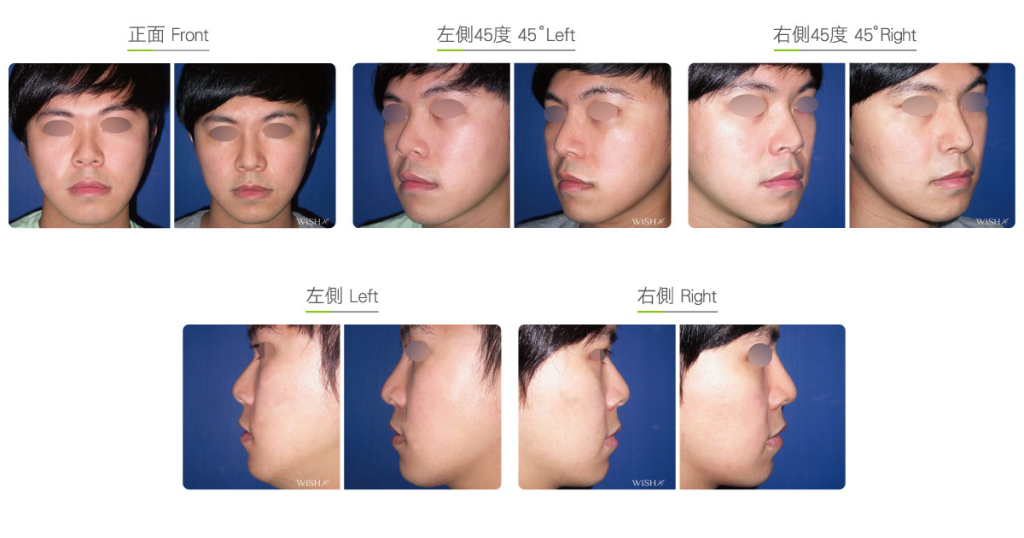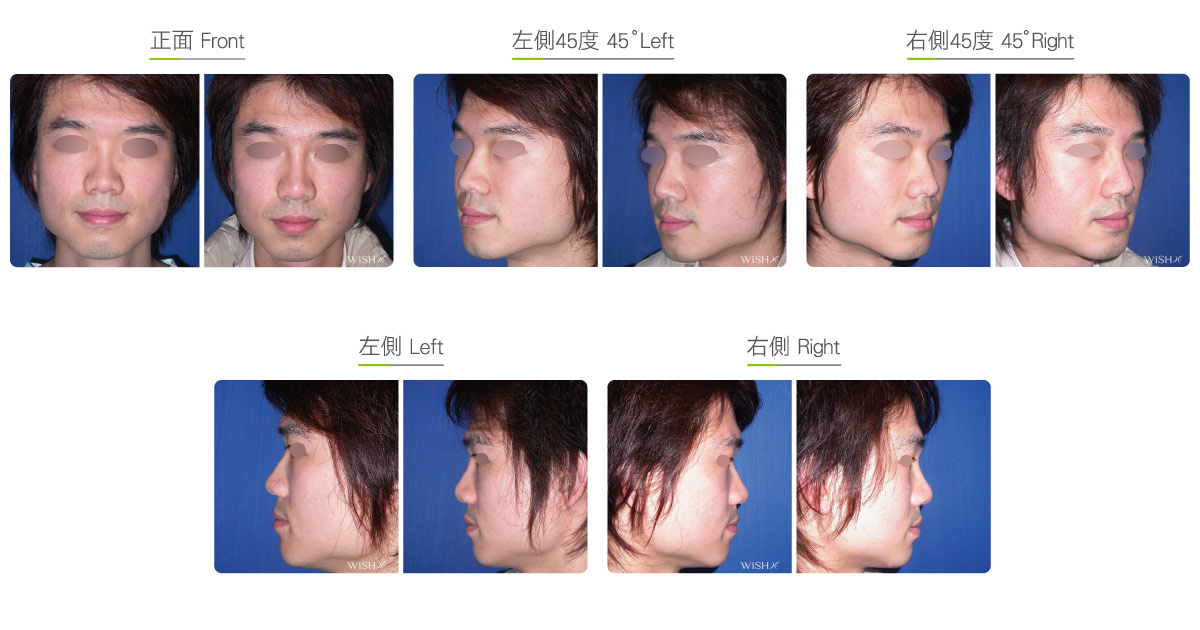Simple Nasal Bridge Augmentation
This surgery is mainly aimed to augment the nasal bridge (nasal dorsum) without elongating or reshaping the nasal tip, which will therefore not obviously alter the shape, angle, or length of the nasal tip. It is indicated for patients with better original conditions of the nasal tip but just to correct the flat and low nasal bridge. This surgery is first performed by making an incision of approximately 0.5 cm in the unilateral nostril in which subperiosteal dissection is performed, and then, an appropriate nasal implant is emplaced over the nasal bridge before the intranasal wound is sutured. Optional materials of the emplaced prosthesis include a general silicone nasal implant, Korean-style Bistool silicone nasal implant (also called beak-shaped nasal implant), or Chimera (Sili-Tex) composite nasal implant. Available models comprise type I or L in each prosthesis. Dr. Chuang will suggest the proper type and material in light of individual conditions.
Surgical conditions
Duration
- Type of anesthesia: IV sedation + local anesthesia
- Surgical incision: Approximately 0.5-cm incision in the unilateral nostril
- Recovery: 3–5 days
- Removal of stitches: No
General instructions
Do not smoke for 1 week, and fast from food and water on the day of operation.
- Wear a tape for 1 week postoperatively to fixate the nasal implant.
- Avoid smoking and alcohol for 3 months postoperatively, and avoid impacts to the nasal bridge. Clean the intranasal wound in the morning and evening every day.
- Try to avoid raw seafood and shell seafood for 2 months postoperatively to avoid stimulation to the prosthesis or rejection.
Ideal candidates
- Patients with good conditions for rhinoplasty who only require the emplacement of a single nasal implant
- Those with a fleshy nasal tip that only requires nasal bridge augmentation
- Those who desire extremely natural results in rhinoplasty
- Those who desire rhinoplasty but are susceptible to nasal trauma
Potential complications
- Implant deviation
- Extrusion
- Infection
- Excessive pointedness or white spots at the nasal tip
- Foreign body reaction
- Results short of expectation
Surgical advantages
-
The operating time is short and the recovery is fast (approximately 3–5 days).
-
The surgical procedures are simple, which lower the risks of inflammation and infection.
-
If necessary, the nasal implant is easy to remove in the future to restore original conditions.
-
The surgical expenses are relatively low.
Surgical drawbacks
-
The surgery can only augment the nasal bridge but not to fix a short or an upturned nose.
-
If the nasal tip skin is thinly covered or ill-conditioned, white spots may appear at the nasal tip and nasal implant protrusion may occur.
-
The nasal tip may become short in the future due to nasal implant contracture.
-
A type I nasal implant may slant or transpose if there is no effective fixation.

